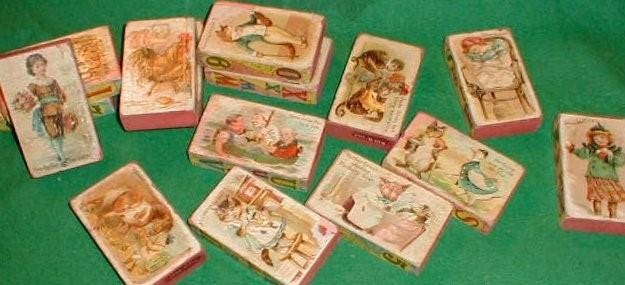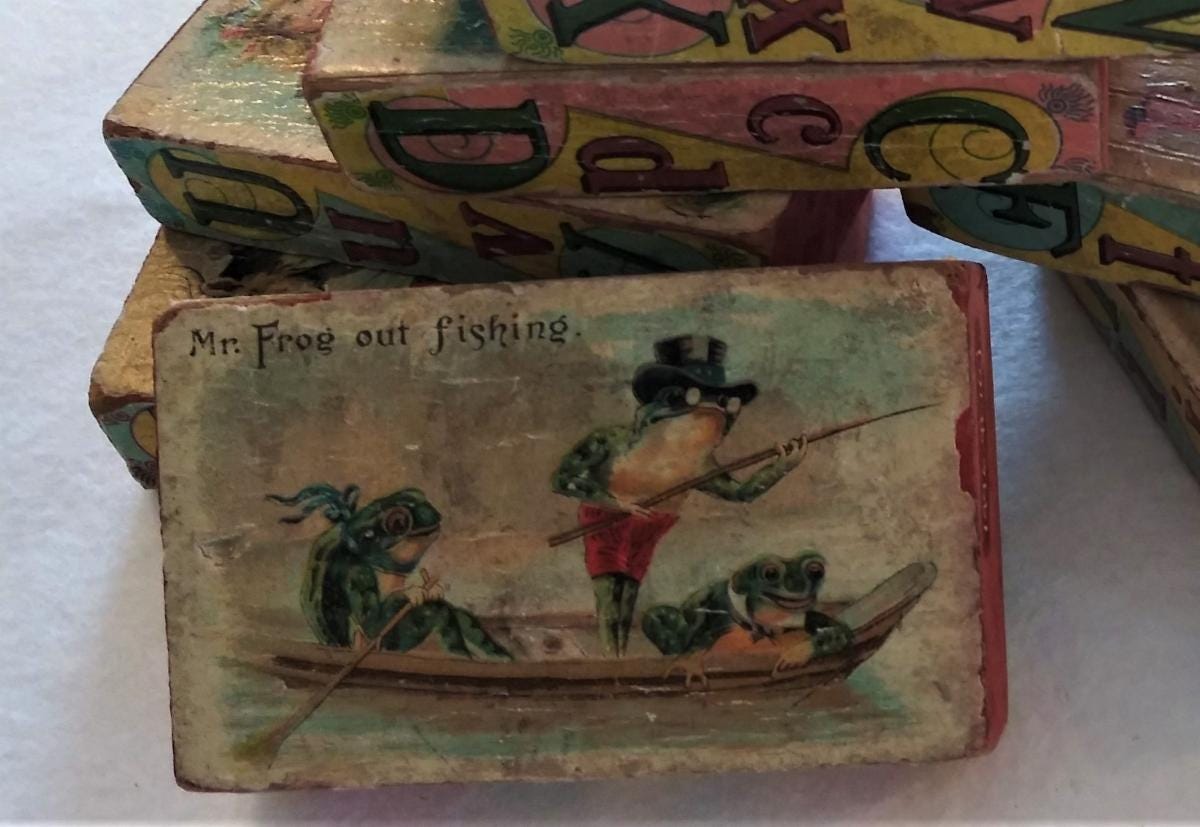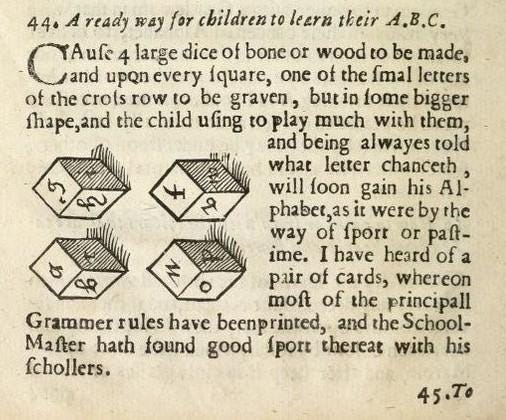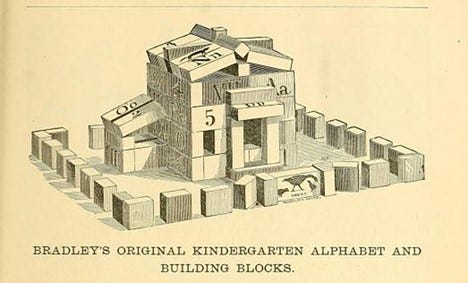Back to School - A, B, C, D... How did you learn your letters?
ACHC #1996.091.10a-o
ABC blocks haven’t changed much over the years, but many weren’t as fancy as the ones in our collection. Usually they were simple blocks with the alphabet letters painted or etched on. Most were all in capital letters. Some for the “more advanced learner” also had small letters and numbers.
The ones in our collection date from about 1910 and depict numbers and letters on each side along with fanciful images of animals.
Detail of ACHC #1996.091.10a-o
But when did ABC blocks originate?
The concept of alphabet blocks as a learning tool goes back to the 16th – 17th centuries.
In 1594, Sir Hugh Plat, in his book of inventions, The Jewell House of Art and Nature, wrote of the possibility of alphabet blocks. He even included what the blocks should look like and a description of their use.
“Cause 4 large dice of bone or wood to be made, and upon every square, one of the small letters of the cross row to be graven, but in some bigger shape, and the child using to play much with them, and being always told what letter chanceth, will soon gain his Alphabet, as it were by the way of sport and pastime.”
Internet Archive/Public Domain
English philosopher, John Locke, also mentioned the letter blocks as a learning tool for small children. In his 1693 work, Some Thoughts Concerning Education, Locke suggested that:
“There may be dice, and play-things, with the letters on them to teach children the alphabet by playing; and twenty other ways may be found, suitable to their particular tempers, to make this kind of learning a sport to them.”
19th-century German educator Friedrich Wilhelm August Fröbel, championed the use of alphabet blocks in the education of children world-wide.
Fröbel (1782-1852) laid the foundation for modern education of children. He approached teaching with the belief that children have unique needs and capabilities and learn best through play. In 1837, he started a preschool in Bad Blankenburg, Germany - a “care, playing and activity institute.” Three years later Fröbel renamed the institute, "Kindergarten" (German for “children’s garden”). Learning activities included singing, dancing, gardening, and playing with wooden shapes manufactured by Fröbel.
These shapes known as Froebel Gifts were a series of toys matched to stages in a young child’s development, from infancy to 10 years old.
Fröbel’s gifts. Kippelboy/CC BY-SA
It was Milton Bradley, right here in Massachusetts, who in 1870 started producing building blocks based on Fröbel’s work and called them Bradley’s Original Kindergarten Alphabet and Building Blocks. Instead of the plain geometric shapes, Bradley added letters and numbers to the blocks.
The concept swept the nation.
Internet Archive/Public Domain
Alphabet blocks and building blocks are still a mainstay of children’s education and play. I have a set in my house. Do you?









